private spaceflight
description: paid for by an entity other than a government agency
36 results
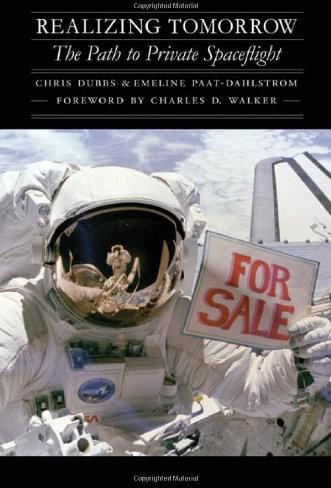
Realizing Tomorrow: The Path to Private Spaceflight
by
Chris Dubbs
,
Emeline Paat-dahlstrom
and
Charles D. Walker
Published 1 Jun 2011
Ansari's high name recognition further added to the publicity being generated around the private space industry. As each orbital client flew, it gave them and SA global free publicity through millions of media impressions. At the same time, it reignited the waning spaceflight interest of the general public. Prior to Tito's flight, shuttle and Soyuz flights had become routine. Polls showed that most people didn't even know the iss existed. But Tito's controversial flight brought space and NASA back to center stage, commanding an unprecedented number of hits on NASA'S Web site. Although most people had been introduced to the concept of private spaceflight, it didn't quite seem real until the fourth orbital client and first female space tourist, Anousheh Ansari, started publishing her online blogs.
…
Substitute "spaceflight" for "flight," and the seventy-year gap between Lindbergh and Diamandis melted away. Lindberg's thoughts might have been his own. There was a remarkable similarity in the way both men strategized to turn a dream into reality. No small wonder that Diamandis took the book to heart- it had shown him the way to accelerate private spaceflight development. He would create the first suborbital spaceflight prize. The concept of using prizes to jump-start innovation was hardly new. From advancing aviation to the precise detection of time, prizes have played a major part in advancing radical technology throughout history. In 1714 Britain's Longitudinal Act created cash prizes for the first marine chronometer, later won by Englishman John Harrison in 1735.
…
Diamandis would name it the "x PRIZE" - the X serving as a placeholder for the name of the benefactor who would give the needed prize money. He also settled on $to million as the prize amount, a nice round number that is also represented by "X" in Roman numerals. Now he was ready to recreate the same golden age of aviation in spaceflight through a private spaceflight competition. Diamandis wasted no time telling Maryniak of his wild idea. "I was the first guy to tell Peter he was crazy," Maryniak recalled. But Maryniak soon recanted, knowing full well that this might be the solution to bringing down the wall that was stopping all progress." The wall, quite simply, was the "premise that only governments could do it [spaceflight].
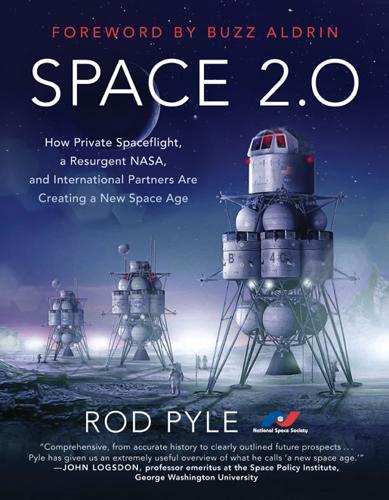
Space 2.0
by
Rod Pyle
Published 2 Jan 2019
In response, the Obama administration outlined plans to spend more money to support development of human-rated spacecraft in the private sector, and to salvage parts of the Constellation program—an evolution of Constellation’s heavy booster, now dubbed the Space Launch System (SLS), and the Orion capsule. To many observers, this represented a welcome change in priorities. NASA would continue to build—albeit very slowly—its own space capsule and large rocket, which would carry a human crew to rendezvous with an asteroid in the 2020s. NASA would additionally direct funding to private spaceflight companies such as SpaceX and Boeing to deliver astronauts and supplies to the ISS. Artist’s concept of the cancelled Asteroid Redirect Mission. Image credit: NASA There was one major bug in the ointment, however. The Asteroid Redirect Mission (ARM), as it came to be known, while a valid demonstration of technology and engineering, was not popular.
…
I thought about how the Apollo spacecraft had been replaced by the shuttle, ending our efforts for human exploration beyond Earth orbit. I reflected on what alternative paths might have been followed, and what the results might have been. I balanced these notions with positive thoughts about the rise of private spaceflight and China’s nascent efforts. One thing became increasingly clear as I pondered the future: Whatever the next few decades held in store, the results were unlikely to resemble the first space age, and that was a good thing. Since the late 1970s, many space advocates have pined for another “Kennedy moment,” when an American president or foreign leader (probably Russian) would stride to a podium and announce a daring, large-scale government program to accomplish aggressive new goals in space, such as JFK did when he announced the Apollo lunar landing program in 1961.
…
The study continued, noting that: “NASA’s allocation, on average, was estimated to be approximately 24 percent of the national budget (the NASA allocation in 2007 was approximately 0.58 percent of the budget).”10 At its height in the mid-1960s, NASA’s budget was almost 5 percent of federal dollars; it is now about a tenth of that. At the same time, the agency is running far more complex and wide-ranging programs than they were in the 1960s, including weather and Earth-science satellites, robotic planetary and deep-space exploration programs, and human-staffed efforts such as the ISS. The agency is also investing in private spaceflight. So NASA is, in fact, doing far more with much less. In 1969 dollars, the Apollo program was estimated to have cost about $20 to $25 billion (or roughly $150 billion in today’s dollars). Regardless of the total federal budget, that sounds like a lot of money. And to many people, it was too much to spend for what they thought of as just 840 pounds of moon rocks and a few thousand pictures.
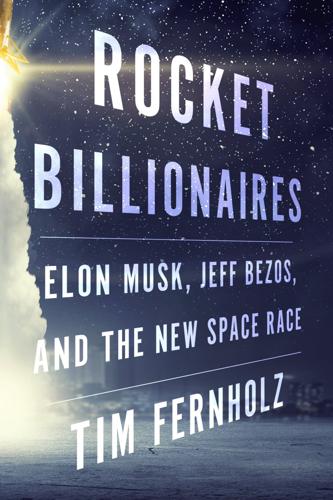
Rocket Billionaires: Elon Musk, Jeff Bezos, and the New Space Race
by
Tim Fernholz
Published 20 Mar 2018
He was an eccentric, obsessed with ultra-strong, lightweight materials made of woven carbon fibers, a pioneer when many in the industry weren’t ready to trust new composites over tried-and-true metals. Microsoft’s Paul Allen, seeking a space investment of his own, had been won over by Rutan’s effort to capture the private spaceflight prize and backed him with a $20 million investment. Unlike other space engineers, Rutan usually kept one foot in the atmosphere. SpaceShipOne is a space plane. This is a term of art for a vehicle that can reach space through rocket propulsion but also has wings to generate lift, allowing it to fly in the atmosphere like an airplane.
…
It was 2004, and the space age that Americans had been promised for decades finally seemed within grasp. When Virgin Galactic was unveiled, Musk’s SpaceX was still just a few years old, barely more than a group of enthusiasts. They were still planning a test flight of their first rocket, the Falcon 1. Virgin looked destined to be the first into the private spaceflight market, with a proven design, a sales plan in action, and a passionate backer making headlines. Is that why Bezos, whose space company predated them both, chose to unveil his company’s plans and bold investment in 2005? Given the lack of warning and apparent lack of follow-up, the question is interesting.
…
Moreover, he wasn’t done raising expectations. Musk unveiled his plans for a new rocket, dubbed the Falcon 5 because it would fly on five Merlin engines, not just one. That rocket, Musk said, would be ready two years later, in 2005. The next year would turn out to mark a major turning point in the history of private spaceflight, a milestone that would benefit both Musk and his competitors. The only problem? Musk and SpaceX had nothing to do with it. 7 Never a Straight Answer The whole culture of program management in the US aerospace and defense industry is today enormously biased toward excessive conservatism.
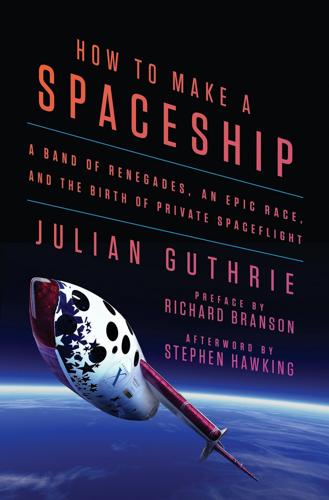
How to Make a Spaceship: A Band of Renegades, an Epic Race, and the Birth of Private Spaceflight
by
Julian Guthrie
Published 19 Sep 2016
Peter, in introducing everyone, noted that Byron had now flown more than three hundred orbits, logging 468 hours—nearly twenty days—in space. Colette Bevis, seated nearby, had headed marketing for Society Expeditions, a company trying to break into commercial space. Across the table was Gary Hudson, a college dropout who had taught launch vehicle design at Stanford, and was an entrepreneur who had been pushing for private spaceflight development since 1969, when he was nineteen. He just wanted to build and ride in a reusable spaceship, preferably one that did both vertical takeoffs and vertical landings. David Wine had known Peter since the early ISU days and was an investor in International Microspace. Wine had been in talks with Burt Rutan about moving Scaled Composites from the Mojave Desert to Montrose.
…
He needed a rocket with more power, and he had just the idea. 28 Power Struggles After the June 21 flight, Burt started questioning for the first time whether his homemade craft could pull off the XPRIZE feat. SpaceShipOne had barely reached its goal of space, and pilot Mike Melvill had endured the flight of his life. To the public, it appeared Scaled Composites had hit a home run, hosting an estimated 25,000 people for the first private spaceflight and certifying the world’s first commercial astronaut. But privately, Burt was worried that the flight had exposed weaknesses in his spacecraft. During the ascent, Mike had ended up in airspace over the populated city of Palmdale—way off the two-mile-by-two-mile flight path approved by the Federal Aviation Administration.
…
Witt, seeing the rolls in the sky and on the screens, said, “Uh oh, uh oh. He’s in a roll.” His fellow commentator said, “It does not appear to be a scripted maneuver.” Silence fell over the crowd. Richard Branson looked over at Sally Melvill. Her anguished expression said it all. Branson dreamed of private spaceflight, but knew this was pushing the limits. Paul Allen watched, feeling himself age twenty years in a few stressful moments. Dick Rutan was talking with Miles O’Brien live on CNN when the rolls began. Dick said to O’Brien, “This is probably not how Mike planned it.” Dick looked up at the sky and thought that there was a real chance that Mike would not recover.
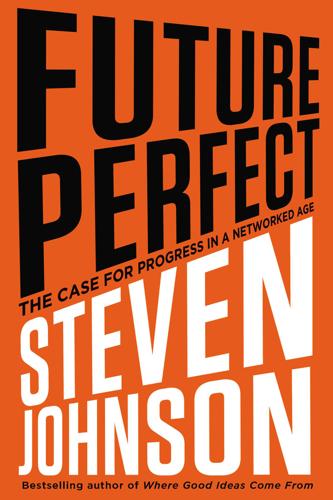
Future Perfect: The Case for Progress in a Networked Age
by
Steven Johnson
Published 14 Jul 2012
Now the source of dozens of million-dollar prizes in a wide range of fields, the organization took its original inspiration from the Orteig Prize won by Charles Lindbergh in 1927 for the first successful transatlantic flight. The X Prizes began in the mid-1990s, when the aerospace engineer and entrepreneur Peter H. Diamandis announced a competition that would spur innovation in the then nonexistent private-spaceflight industry. Ten million dollars would be awarded to any group that could carry three people beyond the earth’s atmosphere, approximately sixty-two miles above the surface of the planet. (To prove that the solution was a durable one, the prizewinner had to complete the mission successfully twice in two weeks.)
…
The foundation prides itself on the way it develops its new prizes, drawing on a peer network of diverse interests to “ensure the input of a variety of perspectives.” The network of advisers that created the Lunar X Prize included Internet entrepreneurs, technology historians, NASA officials, MIT aeronautics professors, and pioneers in the private-spaceflight industry. Each prize emerges out of an intense, layered process: researching the field and defining worthy problems, and then crystallizing the best set of objectives for the prize that will capture the attention of would-be winners as well as the wider public. The X Prize founders may have been inspired by the Orteig Prize and the Spirit of St.
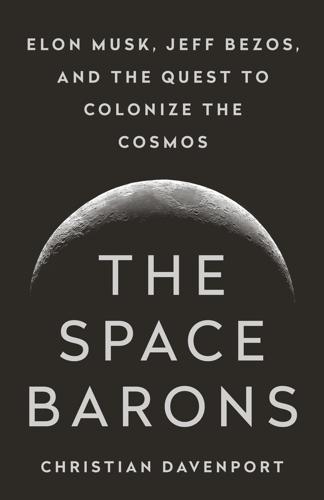
The Space Barons: Elon Musk, Jeff Bezos, and the Quest to Colonize the Cosmos
by
Christian Davenport
Published 20 Mar 2018
In addition to the dozens of interviews I conducted for this book, my research depended on many texts, a few of which merit specific mention: Ashlee Vance’s Elon Musk: Tesla, SpaceX, and the Quest for a Fantastic Future, Brad Stone’s The Everything Store: Jeff Bezos and the Age of Amazon, and Julian Guthrie’s How to Make a Spaceship: A Band of Renegades, an Epic Race, and the Birth of Private Spaceflight. While I was on leave from the Post, I was fortunate to find another home—the Wilson International Center for Scholars—which provided a much-needed space to write and reflect. I’m thankful for the support of Jane Harman and Robert Litwak, who made the experience possible. Rafe Sagalyn, my agent, was a relentless and enthusiastic advocate for the project.
…
Upset with what he saw: Andrew Pollack, “A Maverick’s Agenda: Nonstop Global Flight and Tourists in Space,” New York Times, December 9, 2003. Rutan acknowledged: Adams, “The New Right Stuff.” “See what you’re up against”: Julian Guthrie, How to Make a Spaceship: A Band of Renegades, an Epic Race, and the Birth of Private Spaceflight (New York: Penguin, 2016), 339. “Yeah,” Rutan concurred: Paul Allen, Idea Man (New York: Portfolio/Penguin, 2011). Left unsaid: Guthrie, How to Make a Spaceship, 341. During Binnie’s first: Ibid., 229. Allen would see the prize!: Ibid., 235. But suddenly Siebold: Guthrie, How to Make a Spaceship, 360–361.
…
He went on to thank NASA for its support, saying it helped the company save about a year in development time. This was indeed a tremendous milestone—and huge news, a Henry Ford moment: Jeff Bezos was building a rocket engine. Garver immediately sensed a public-relations opportunity for NASA and the White House. Since they had backed Blue with $25.7 million in contracts, and were supporting the private space industry, she wanted to shout this success to the rooftops. Let all those doubters in Congress, in industry, even in NASA’s own leadership, know that these companies, with help from the government, could succeed. “Your note about NASA’s assistance saving you a year of development time is especially welcome,” Garver wrote to Meyerson.
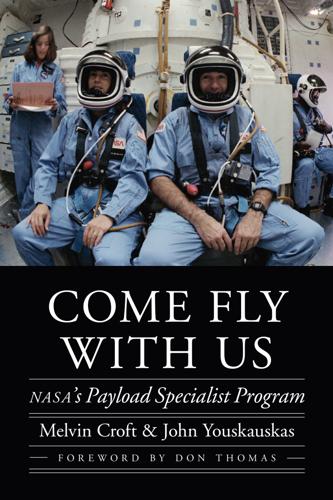
Come Fly With Us: NASA's Payload Specialist Program
by
Melvin Croft
,
John Youskauskas
and
Don Thomas
Published 1 Feb 2019
Developmental contracts for commercial crew transport were awarded to the Boeing Company and Elon Musk’s SpaceX for more capable vehicles, but neither would fly before 2018, after arduous funding issues and technical delays. However, there is great promise for scientists and engineers to be able to conduct space-based microgravity research in a coming age of suborbital—and even orbital—private spaceflight. Two aerospace companies—Virgin Galactic and Blue Origin—are developing two radically different designs for passenger-carrying spacecraft intended to (initially) launch fare-paying thrill seekers on brief suborbital flights above one hundred kilometers, which is the generally accepted definition of “space.”
…
See media pressure suits, 91, 93–94, 363, 365 principal investigators, 16–17, 27, 61, 76, 106, 128, 153, 265 Prinz, Dianne, 123, 124, 125, 126, 128–29, 136 probability risk analysis (PRA), 43 problems: on Atlantis, 211, 287; on Challenger, 95–96, 97–98, 99, 114–17, 132–33, 177, 340–41, 356–57, 359; with clothing, 151; on Columbia, 325–26, 329–30, 372, 379–82; with communications, 173–74; as “contingencies,” 45; on Discovery, 185–86, 232–33, 250, 379; payload specialists and, 131–32; in private spaceflight, 387; with shuttle program, 359–60; on Spacelab, 74, 130–31, 148 protein crystal growth experiment, 248, 328, 330 provocative tests, 69–71, 72 PSSG (Payload Specialist Selection Group), 62, 64 public affairs officers (PAOs), 6, 380 public relations, 30–31, 40, 353, 376 pump, 294–95 purine nucleoside phosphorylase, 328 Puz, Craig A., 195, 372 Quistgaard, Erik, 63 racks, 68, 140, 144, 148–49 RAHF (Research Animal Holding Facility), 112, 114 RAM (Research and Applications Modules), 11 Ramadan, 264, 272 Ramon, Ilan, 53, 378–79, 379, 382–83 RAN (Royal Australian Navy), 87, 88 Rapp, Rita, 328 RAUs (remote acquisition units), 68–69 RCA, 293, 321, 324, 336 RCA Advanced Technology Lab, 309, 310 RCA Americom, 309–10 RCA Astro Electronics division, 305, 308–9 Reagan, Ronald, 42, 86, 180, 203, 253, 347–48, 350–51, 352, 357 Reichhardt, Tony, 116 remote acquisition units (RAUs), 68–69 remote manipulator system, 85, 95 repairs, 74–76, 84, 152, 235, 250–51, 322 reporters.
…
In the Outward Odyssey: A People’s History of Spaceflight series Into That Silent Sea: Trailblazers of the Space Era, 1961–1965 Francis French and Colin Burgess Foreword by Paul Haney In the Shadow of the Moon: A Challenging Journey to Tranquility, 1965–1969 Francis French and Colin Burgess Foreword by Walter Cunningham To a Distant Day: The Rocket Pioneers Chris Gainor Foreword by Alfred Worden Homesteading Space: The Skylab Story David Hitt, Owen Garriott, and Joe Kerwin Foreword by Homer Hickam Ambassadors from Earth: Pioneering Explorations with Unmanned Spacecraft Jay Gallentine Footprints in the Dust: The Epic Voyages of Apollo, 1969–1975 Edited by Colin Burgess Foreword by Richard F. Gordon Realizing Tomorrow: The Path to Private Spaceflight Chris Dubbs and Emeline Paat-Dahlstrom Foreword by Charles D. Walker The X-15 Rocket Plane: Flying the First Wings into Space Michelle Evans Foreword by Joe H. Engle Wheels Stop: The Tragedies and Triumphs of the Space Shuttle Program, 1986–2011 Rick Houston Foreword by Jerry Ross Bold They Rise David Hitt and Heather R.
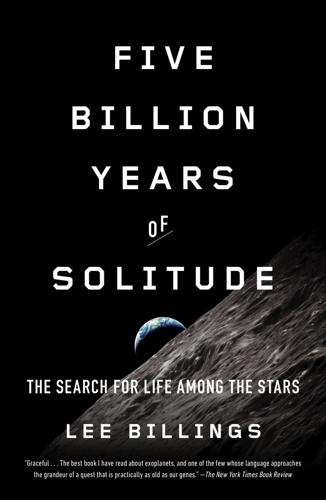
Five Billion Years of Solitude: The Search for Life Among the Stars
by
Lee Billings
Published 2 Oct 2013
If that happens in thirty, forty years, I’ll be too old to run TPF, but at least I’d have the money to make it personally happen.” Seager had signed on as a scientific advisor with a new venture, Planetary Resources, Inc., which would publicly debut two months after our conversation. The company was cofounded by two influential entrepreneurs of the emerging private spaceflight industry, Eric Anderson and Peter Diamandis; among its investors were Eric Schmidt and Larry Page of Google, and the billionaire space tourist and software developer Charles Simonyi. Other than Seager, its advisors included the Hollywood filmmaker and deep-ocean explorer James Cameron and a former U.S.
…
Roger D. Blandford et al., New Worlds, New Horizons in Astronomy and Astrophysics (Washington, DC: National Academies Press, 2010). This report is available online at http://www.nap.edu/catalog.php?record_id=12951. Chris Dubbs and Emeline Paat-Dahlstrom, Realizing Tomorrow: The Path to Private Spaceflight (Lincoln: University of Nebraska Press, 2011). Charles Elachi et al., A Road Map for the Exploration of Neighboring Planetary Systems (Pasadena: NASA-Caltech Jet Propulsion Laboratory, 1996). This report is available online at http://exep.jpl.nasa.gov/exnps/toc.html. James Kasting, Wesley Traub et al., Terrestrial Planet Finder—Coronagraph (TPF-C) Flight Baseline Mission Concept (Pasadena: NASA-Caltech Jet Propulsion Laboratory, 2009).

The Moon: A History for the Future
by
Oliver Morton
Published 1 May 2019
Some, though, went further. They argued that the purpose of private spaceflight was not merely to displace government but to undermine its raison d’être. Landing a man on the Moon had come to be seen—as Kennedy had intended it to be seen—as the ultimate symbol of what a government could do to achieve a stated national goal: hence the double-edged importance of “If we can put a man on the Moon . . .”, stressing simultaneously what can be done and what the country chooses not to do. But what if there were no such “we”? Private spaceflight was important to some on the libertarian right, I learned, specifically because it would remove that singular governmental source of prestige, disproving the claim that there were achievements which, by their nature, were for governments alone: natural monopolies of prestige.
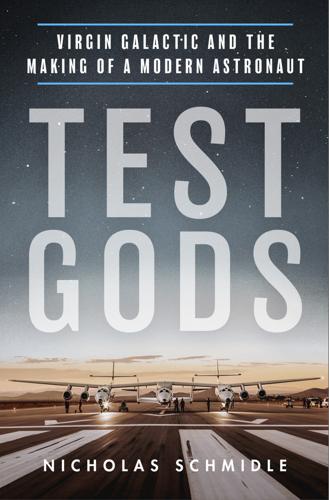
Test Gods: Virgin Galactic and the Making of a Modern Astronaut
by
Nicholas Schmidle
Published 3 May 2021
“twice as tall”: Irene Mona Klotz, “Rutan Meets His Rocket Heroes,” BBC.com, October 25, 2004. “a blot upon fair Nature’s face”: Edmund J. Carpenter, “Mojave, the Phantom City,” Godey’s Magazine 131 (July 1895). Lethal pit vipers slithered among the creosote bushes: Julian Guthrie, How to Make a Spaceship: A Band of Renegades, an Epic Race, and the Birth of Private Spaceflight (New York: Penguin Press, 2016). “driving out the tramps like rabbits”: “Man Hunt in Hobo Haunts on Desert,” Los Angeles Times, March 16, 1908. dry his grapes and sell them as raisins: Rollo, Burt Rutan. “a creative battering ram”: Andy Meisler, “Slipping the Bonds of Earth and Sky,” New York Times, August 3, 1995.
…
Fernholz, Tim. Rocket Billionaires: Elon Musk, Jeff Bezos, and the New Space Race (New York: Houghton Mifflin, 2018). Glenn, John, and Nick Taylor. John Glenn: A Memoir (New York: Bantam Books, 1999). Guthrie, Julian. How to Make a Spaceship: A Band of Renegades, an Epic Race, and the Birth of Private Spaceflight (New York: Penguin Press, 2016). Kemp, Kenny. Destination Space: Making Science Fiction a Reality (London: Virgin Books, 2007). Koller, Jeffrey W. The Eden Peace Witness: A Collection of Personal Accounts (Wichita, KS: Jebeko Publishing, 2004). Mailer, Norman. Of a Fire on the Moon (Boston: Little, Brown, 1970).

Think Like a Rocket Scientist: Simple Strategies You Can Use to Make Giant Leaps in Work and Life
by
Ozan Varol
Published 13 Apr 2020
In the words of one SpaceX press release, this feat is like balancing “a rubber broomstick on your hand in the middle of a wind storm.”19 In December 2015, the first stage of a Falcon 9 rocket successfully completed an upright landing on solid ground after putting its cargo in orbit. Blue Origin—which is Bezos’s private spaceflight company—also landed the reusable booster stage of its New Shepard rocket back on Earth after sending it to space. Since then, both companies have refurbished and reused numerous recovered rocket stages, sending them back out to space like certified pre-owned cars. What was once a wild experiment is on its way to becoming routine.
…
Jacey Fortin and Karen Zraick, “First All-Female Spacewalk Canceled Because NASA Doesn’t Have Two Suits That Fit,” New York Times, March 25, 2019, www.nytimes.com/2019/03/25/science/female-spacewalk-canceled.html. 8. For an excellent book that tells this story, see Julian Guthrie, How to Make a Spaceship: A Band of Renegades, an Epic Race, and the Birth of Private Spaceflight (New York: Penguin 2016). 9. “SpaceX Signs 20-Year Lease for Historic Launch Pad 39A,” NBC News, April 15, 2014, www.nbcnews.com/science/space/spacex-signs-20-year-lease-historic-launch-pad-39a-n81226. 10. Amy Thompson, “NASA’s Supersize Space Launch System Might Be Doomed,” Wired, March 14, 2019, www.wired.com/story/nasas-super-sized-space-launch-system-might-be-doomed. 11.
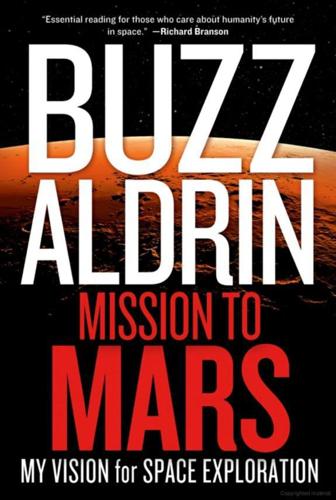
Mission to Mars: My Vision for Space Exploration
by
Buzz Aldrin
and
Leonard David
Published 1 Apr 2013
• XCOR Aerospace rocketeers build reusable rocket-powered vehicles, propulsion systems, advanced nonflammable composites, and rocket piston pumps. XCOR is building the Lynx, a piloted, two-seat, fully reusable liquid rocket–powered suborbital vehicle that takes off and lands horizontally. The Lynx family of vehicles is geared toward research and scientific missions, private spaceflight, and microsatellite launch. An objective of the group is to fly Lynx commercial vehicles to 100-plus kilometers in altitude up to four times per day. Global Space Economy When you look at the global space economy, a striking dollar number stems from a yearly read of the Space Foundation’s appraisal of the situation.

Seriously Curious: The Facts and Figures That Turn Our World Upside Down
by
Tom Standage
Published 27 Nov 2018
Why we’re still waiting for the space elevator For decades, engineers and science-fiction writers have dreamed of lifts capable of carrying things into orbit from the Earth’s surface. Konstantin Tsiolkovsky, a Russian scientist, suggested the idea in 1895, inspired by the Eiffel Tower. And in 1979 Arthur C. Clarke wrote an entire novel, The Fountains of Paradise, about the construction of such a space elevator. Thanks to SpaceX and other private spaceflight companies, rocket launches have fallen in price in recent years. Each launch of the Falcon Heavy, the most powerful rocket in operation today, costs around $90m. But whisking satellites, space probes and even people into orbit on a giant elevator might be cheaper, more reliable and more civilised than using giant fireworks – if one could be built.
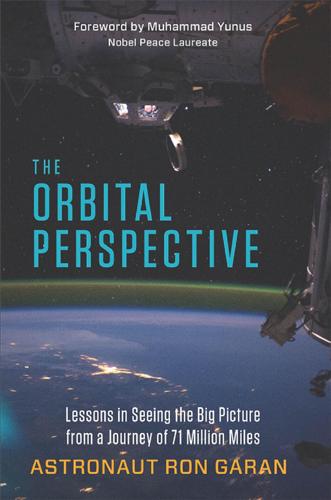
The Orbital Perspective: Lessons in Seeing the Big Picture From a Journey of 71 Million Miles
by
Astronaut Ron Garan
and
Muhammad Yunus
Published 2 Feb 2015
I also am committed to helping as many people as possible have their own orbital perspective experience. To accomplish this, I am working with a powerful team of visionaries devoted to the democratization of space. Our first bold initiative is the creation of Star Harbor Space Training Academy, which will provide all the training necessary for upcoming private spaceflight participants and the crews that will fly them.3 Our hope is also to provide everyone with a powerful opportunity to experience the orbital perspective, even if they never leave the ground. Human operations in low Earth orbit are no longer the sole domain of large government agencies, and with a new and exciting commercial human spaceflight industry blossoming, it’s a very exciting time in history.

50 Future Ideas You Really Need to Know
by
Richard Watson
Published 5 Nov 2013
Alternatively, if you’d like a faster opinion on likely funeral dates just visit deathclock.com the condensed idea Living forever timeline 2100 Human beings start migration to far-flung galaxies 2150 Typical humanoid life span is 584 2200 Children heavily taxed to reduce overcrowding on planet XB-1987 2250 Having children is made illegal on Earth 2255 Children kept illegally 2275 Average life span now over 800 2300 Transhumanism declared a giant mistake 36 Alt.Space & space tourism “Alt.Space” is a term that hasn’t quite taken off yet. It’s a phrase that is just starting to emerge, used to describe private spaceflight, especially that provided by a new breed of companies intent on offering low-cost access to space through the creation of novel technologies or business models. As such, Alt.Space companies are competing directly with NASA and other national or international government space organizations. Who, just a few decades ago, would have thought that billionaires would one day be in a race to invade space?
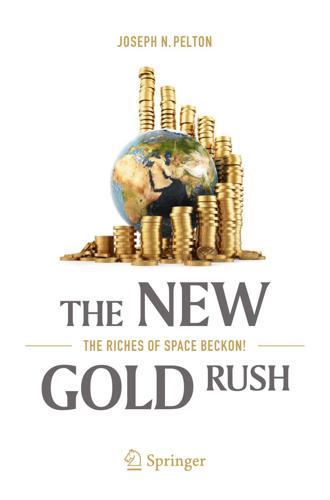
The New Gold Rush: The Riches of Space Beckon!
by
Joseph N. Pelton
Published 5 Nov 2016
One might 1 day hear the following conversation: “Are you going skiing in the Rockies this winter?” “No I thought I would take a flight into outer space to see the Aurora Borealis, instead.” Peter Diamandis and Eric Anderson have worked in tandem to spur the space tourism industry. They were strong advocates to launch what was first called the Private Spaceflight Federation. This then quickly evolved to become the Commercial Spaceflight Federation that now includes a collection of spaceplane developers, spaceport operators and a variety of aerospace organizations . XCOR, with a variation on the concept of taking a spaceplane ride into “outer space” is offering a flight on their Lynx Mark 11 that only goes up about 40 miles (64 km) for only some $100,000.
…
Most recently Musk has announced plans to launch in 2018 this largest vehicle to Mars with a “Red Dragon” capsule on board. The objective is to demonstrate the ability to eventually send astronauts to Mars. As Musk has said with serious intent but tongue in cheek: “I want to die on Mars, but not on landing.” This remarkably rapid progress by the private space industry is impressive, but it reopens the tough to answer question: “Why cannot NASA make such remarkable progress at a similar rate and such low cost efficiency?” In fact the latest question that surfaced is, why does NASA need to spend billions to design and build the new Space Launcher System (SLS) if SpaceX’s new heavy lift launcher can go to Mars?

The Decadent Society: How We Became the Victims of Our Own Success
by
Ross Douthat
Published 25 Feb 2020
Or to use Cowen’s favored metaphor, if we have plucked most of the low-hanging fruit that the industrial revolution made possible to reach, there might still be a ladder that someone could invent that would make the higher branches suddenly easier to reach, and for all we know, that ladder might be being extended even now. In which case, we will look back on our present decadence as simply a lull—a period when innovation slowed temporarily before self-driving cars and CRISPR and nanotech and private spaceflight sent it surging forward once again. That possibility will be considered in more detail later. But the lull is still the multigenerational reality right now, and human history offers no reassurance that it will necessarily end. As Gordon and Cowen note, it’s the great surge of innovation in recent Western history that’s the historical anomaly, not the disappointing years since our great leap moonward.

Capitalism Without Capital: The Rise of the Intangible Economy
by
Jonathan Haskel
and
Stian Westlake
Published 7 Nov 2017
The microwave oven was a success not just because of the radical leap from military communications to cooking, but also because lots of researchers from Amana, Litton, and their Japanese competitors worked on the design and improved the technology of the magnetron. Sometimes this coordination happens spontaneously. But we can also think of things that help it along. Prizes, like the eighteenth-century Longitude Prize or the twenty-first-century Ansari-X Prize for private spaceflight, can help crowd investment into a neglected area. No doubt, part of the reason the technology press hypes new technologies, like the Internet of Things or solar energy, is not only because it makes for more exciting stories, but because it also has a functional role of drawing attention to up-and-coming areas and encouraging coordinated investment.
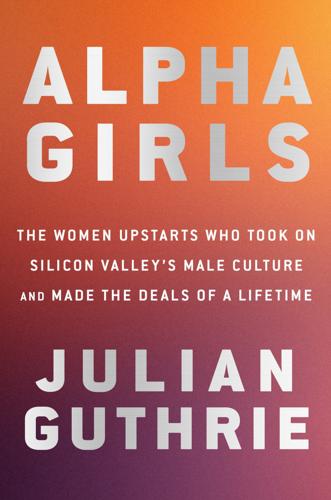
Alpha Girls: The Women Upstarts Who Took on Silicon Valley's Male Culture and Made the Deals of a Lifetime
by
Julian Guthrie
Published 15 Nov 2019
They had sacrificed and suffered setbacks, but they had never given up. The Alpha Girls had created their own paths, had made their own history. And as Magdalena knew, they’d only just begun. AUTHOR’S NOTE The idea for Alpha Girls has roots in my last book, How to Make a Spaceship: A Band of Renegades, an Epic Race, and the Birth of Private Spaceflight. As I traveled around the country talking to groups of engineers, entrepreneurs, and scientists, I kept asking myself one question: Where are all the women? In crowds big and small, there would be only a handful of women. I began to research the many fields where women are underrepresented, and I soon homed in on venture capital as an industry that is not well known but has enormous influence.

Misspent Youth
by
Peter F. Hamilton
Published 1 Jan 2002
Despite the collapse of the Caribbean mass tourism industry, each flight was always full. Ever stricter industrial and bioethic regulations in the developed nations made the relocation of certain specialist core activities to the Windies an attractive proposition for a lot of companies and researchers. The most prominent was of course the private spaceflight operators, even though they were among the smallest financial contributors to the economy of the Caribbean islands. “I can’t see any spaceplanes,” Annabelle complained as they were on their approach to St. John’s. She was pressed up against the cabin window. Jeff looked over her shoulder.

An Optimist's Tour of the Future
by
Mark Stevenson
Published 4 Dec 2010
And Scaled Composites is not the only designer and builder of commercial spacecraft in Mojave. I also walk past hangars for Masten Space Systems and XCOR Aerospace. XCOR’s CEO Jeff Greason (whom I’ll meet later) was part of the 2009 Augustine Commission that reviewed the workings of the American space program. Their report made the case for stronger partnerships between NASA and private spaceflight operators. Greason remarked that their findings departed from previous presidential commissions on the future of US space exploration not by recommending anything radically different but because ‘some people actually paid attention this time.’ Part of the reason, no doubt, is the Space Shuttle’s 2011 retirement date.
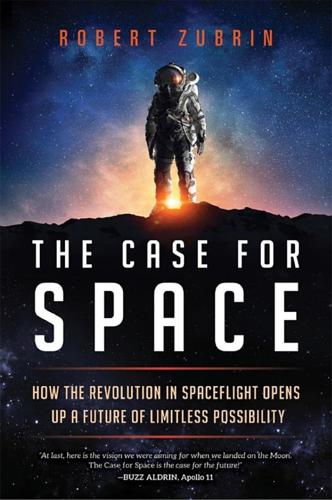
The Case for Space: How the Revolution in Spaceflight Opens Up a Future of Limitless Possibility
by
Robert Zubrin
Published 30 Apr 2019
Nevertheless, Kardashev's effort to create a classification system for advanced spacefaring civilization was an important step. So I have adapted his general schema to what I consider more a useful metric for measuring civilizational progress as presented here. CHAPTER 1. BREAKING THE BONDS OF EARTH 1. Julian Guthrie. How to Make a Spaceship: A Band of Renegades, an Epic Race, and the Birth of Private Spaceflight (New York: Penguin, 2016). 2. Robert Zubrin with Richard Wagner, The Case for Mars: The Plan to Settle the Red Planet, and Why We Must, 2nd ed. (New York: Free Press, 2011). 3. Wikipedia, s.v. “Mars Gravity Biosatellite,” last modified October 26, 2018, 14:23, https://en.wikipedia.org/wiki/Mars_Gravity_Biosatellite; “Mars Society Launches Translife Mission,” Spaceref, August 30, 2001, http://www.spaceref.com/news/viewpr.html?
…
It should incentivize the development of additional systems, including rovers, habitats, life support, power units, space suits, and so on, the same way. Approached in this way, we can have our first permanent bases established and operating on both the moon and Mars within a decade, for a small fraction of NASA's current budget. We will also have a vibrant private space industry, driving down the cost and advancing the technology of launch vehicles, spacecraft, propulsion, and every other system needed for space exploration and development with all the ferocious creativity that free enterprise can bring to bear. With that, the doorway to the universe will be flung wide open.
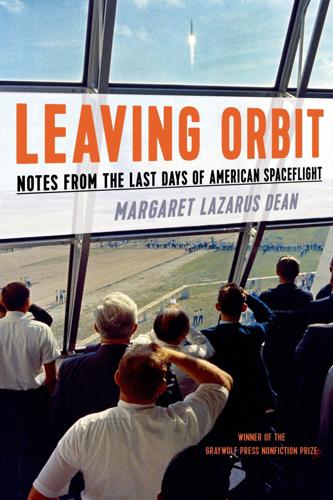
Leaving Orbit: Notes From the Last Days of American Spaceflight
by
Margaret Lazarus Dean
Published 18 May 2015
This would be a first, and it would make SpaceX the front-runner to become the contractor NASA hires to get people and cargo up and down to the International Space Station. Even if today’s launch is successful, Dragon will have to fly many more resupply missions, over a period of years, before it can be considered safe for astronauts. I’ve never been a believer in privatized spaceflight—getting to space as cheaply as possible with an emphasis on catering to paying customers only serves to rob spaceflight of the things I love most about it. But I started to notice how many of my space friends—people I would have thought would be NASA-only snobs like me—were getting excited about the SpaceX launch, were posting updates about it online and making plans to come out for the launch.

The Ultimate Engineer: The Remarkable Life of NASA's Visionary Leader George M. Low
by
Richard Jurek
Published 2 Dec 2019
In the Outward Odyssey: A People’s History of Spaceflight series Into That Silent Sea: Trailblazers of the Space Era, 1961–1965 Francis French and Colin Burgess Foreword by Paul Haney In the Shadow of the Moon: A Challenging Journey to Tranquility, 1965–1969 Francis French and Colin Burgess Foreword by Walter Cunningham To a Distant Day: The Rocket Pioneers Chris Gainor Foreword by Alfred Worden Homesteading Space: The Skylab Story David Hitt, Owen Garriott, and Joe Kerwin Foreword by Homer Hickam Ambassadors from Earth: Pioneering Explorations with Unmanned Spacecraft Jay Gallentine Footprints in the Dust: The Epic Voyages of Apollo, 1969–1975 Edited by Colin Burgess Foreword by Richard F. Gordon Realizing Tomorrow: The Path to Private Spaceflight Chris Dubbs and Emeline Paat-Dahlstrom Foreword by Charles D. Walker The X-15 Rocket Plane: Flying the First Wings into Space Michelle Evans Foreword by Joe H. Engle Wheels Stop: The Tragedies and Triumphs of the Space Shuttle Program, 1986–2011 Rick Houston Foreword by Jerry Ross Bold They Rise David Hitt and Heather R.
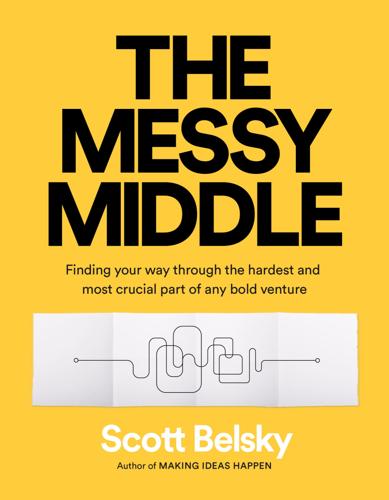
The Messy Middle: Finding Your Way Through the Hardest and Most Crucial Part of Any Bold Venture
by
Scott Belsky
Published 1 Oct 2018
For example, I was once part of a small group dinner with Jeff Bezos, who was an early investor in Behance. I remember being struck by just how many questions he was asking the group about our work and opinions on new design and tech trends among other topics. I recall leaving the dinner and realizing that the conversation had not even touched upon Blue Origin, his private spaceflight company, or the Washington Post, the newspaper that he owns. The man is building rockets to explore the final frontier and controls one of the country’s largest media organizations, but was more interested in asking us about start-ups. It dawned on me that perhaps Amazon’s persistent growth and Jeff’s seemingly infallible grasp of so many different industries was the result of his curiosity overpowering others’ attention for him.
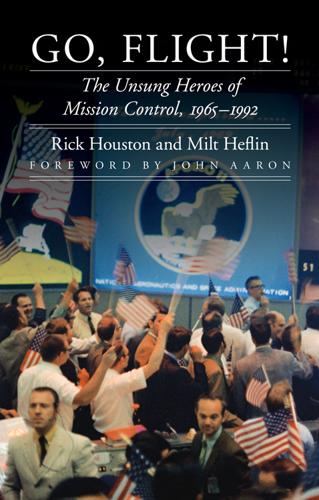
Go, Flight!: The Unsung Heroes of Mission Control, 1965-1992
by
Rick Houston
and
J. Milt Heflin
Published 27 Sep 2015
In the Outward Odyssey: A People’s History of Spaceflight series Into That Silent Sea: Trailblazers of the Space Era, 1961–1965 Francis French and Colin Burgess Foreword by Paul Haney In the Shadow of the Moon: A Challenging Journey to Tranquility, 1965–1969 Francis French and Colin Burgess Foreword by Walter Cunningham To a Distant Day: The Rocket Pioneers Chris Gainor Foreword by Alfred Worden Homesteading Space: The Skylab Story David Hitt, Owen Garriott, and Joe Kerwin Foreword by Homer Hickam Ambassadors from Earth: Pioneering Explorations with Unmanned Spacecraft Jay Gallentine Footprints in the Dust: The Epic Voyages of Apollo, 1969–1975 Edited by Colin Burgess Foreword by Richard F. Gordon Realizing Tomorrow: The Path to Private Spaceflight Chris Dubbs and Emeline Paat-Dahlstrom Foreword by Charles D. Walker The X-15 Rocket Plane: Flying the First Wings into Space Michelle Evans Foreword by Joe H. Engle Wheels Stop: The Tragedies and Triumphs of the Space Shuttle Program, 1986–2011 Rick Houston Foreword by Jerry Ross Bold They Rise David Hitt and Heather R.

Tools of Titans: The Tactics, Routines, and Habits of Billionaires, Icons, and World-Class Performers
by
Timothy Ferriss
Published 6 Dec 2016
” Spirit animal: Eagle * * * Peter Diamandis Dr. Peter H. Diamandis (TW: @PeterDiamandis, diamandis.com) has been named one of the World’s 50 Greatest Leaders by Fortune magazine. Peter is founder and executive chairman of the XPRIZE Foundation, best known for its $10 million Ansari XPRIZE for private spaceflight. Today the XPRIZE leads the world in designing and operating large-scale global competitions to solve market failures. He is also the co-founder (along with J. Craig Venter and Bob Hariri) and vice chairman of Human Longevity, Inc. (HLI); and the co-founder and executive chairman of Planetary Resources, a company designing spacecraft to prospect near-Earth asteroids for precious materials (seriously).

Fully Automated Luxury Communism
by
Aaron Bastani
Published 10 Jun 2019
Today marks the anniversary of that event, and Blumenthal couldn’t be happier. Alone in his condo, he watches a Falcon Heavy booster rocket alight somewhere in the mid-Atlantic. Its successful landing not only makes a manned mission to Mars highly likely, but also continues an unblemished three-year safety record for SpaceX, the company which built it. The private space industry, for so long reliant on government contracts and the deep pockets of a few industrialists, is no longer science fiction. Soon rockets, just like this one, will be as familiar as a Boeing 737. After watching the landing streamed on Twitter, Blumenthal – an early stage investor in an asteroid mining company – shares it with a WhatsApp group of like-minded individuals.
…
Using a new family of Raptor rocket engines, the BFR will finally unseat Saturn V as the most impressive launch vehicle ever constructed. At the same time NASA is working on its Space Launch System which, when completed, will join the BFR in a new super-Saturn V category of spacecraft. Birth of a Private Space Industry Musk forecasts the first delivery of cargo to Mars using the ITS as soon as 2022, two years before the first humans set foot on the Red Planet. While his predictions are often right, Musk is notoriously late in delivery. That is partly a function of his business interests – renewables, electric cars and rockets – being at the cutting edge of industrial innovation.
…
After Apollo, in order to reduce overheads and enable launches with greater frequency, NASA pursued the Space Shuttle program. Yet even that cost the US taxpayer half a billion dollars per launch, with the system enjoying no more than five flights a year at its peak. Since 2000 and the arrival of a private space industry, however, costs have fallen precipitously. Today a Falcon 9 rocket (much smaller than the Saturn V) costs SpaceX around $61 million to launch, while the larger Falcon Heavy is less than $100 million. Nevertheless, even those figures mean many companies and individuals stand little chance of reaching space, and even if they have the means to do so, there is currently a two-year waiting list for launch.

Beyond: Our Future in Space
by
Chris Impey
Published 12 Apr 2015
When SpaceShipTwo finally has its inaugural flight, Branson and his two adult children, Holly and Sam, will be on board. The Space Futurist “Over the next 20 to 30 years, humanity will establish itself in space, independent of Earth.” Peter Diamandis is sublimely confident that the teething problems of the private space industry will soon be over and we’ll be on our way to becoming an interplanetary species. This isn’t a goal mentioned anywhere in the Space Act that guides NASA. As he put it, “Not since lungfish crawled out of the oceans onto land has this happened!”11 Like Richard Branson, Peter Diamandis is a serial entrepreneur and a Trekkie.
…
His father was an engineer, so he was used to getting explanations of how things worked. He built rockets as a kid, but he grew up in South Africa, where there were no premade rockets, so he went to a drugstore, bought the ingredients for rocket fuel, and stuffed them into a pipe. Thirty years later, he was building rockets efficient enough to lead the budding private space industry. He also showed personality traits that would serve him well later and propel him into the top echelon of innovators and entrepreneurs. His mother said he had devoured the entire Encyclopædia Britannica by the time he was nine, and he remembered much of it. She had to check that he was getting something to eat and wearing fresh socks every day.
…
Spacesuits have changed very little since the 1960s; the Americans, Russians, and Chinese all use bulky and clunky suits that offer safety but limited mobility.9 A spacesuit has to deal with vacuum and temperature extremes; it has to protect against micrometeorites and infiltration by dust; it has to provide breathable air; and it has to monitor the occupant’s vital signs. The private space industry is hiring top designers for a new generation of spacesuits; in response, NASA turned to social media by having the public vote among the final designs for its next spacesuit. The winner, called Z-2, has collapsing pleats and electroluminescent blue patches and looks strangely retro.10 Beyond the style makeover, there are more substantial improvements.
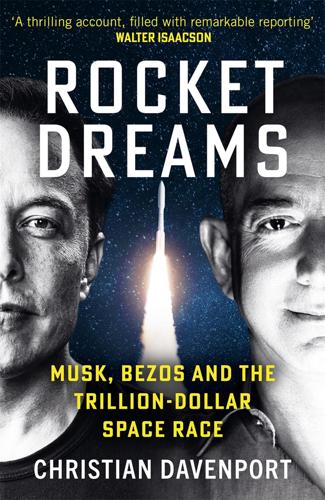
Rocket Dreams: Musk, Bezos and the Trillion-Dollar Space Race
by
Christian Davenport
Published 6 Sep 2025
Pence asked that the room be cleared except for the principals—much of the president’s cabinet, including the Secretaries of State, Commerce, Energy, Transportation, and Homeland Security, as well as the Director of National Intelligence and the Deputy Secretary of Defense. Major members of the private space industry were also in attendance, from the CEOs of stalwarts like Boeing and Lockheed Martin, to those of the entrepreneurial SpaceX and Blue Origin, all of whom sought to align their companies with the goals of the new White House and its enthusiastic space cheerleader, the vice president. “He pulled us together almost like a football huddle,” one person recalled.
…
In Florida, it announced plans to further enlarge the sprawling campus it was building on Cape Canaveral for the development of its New Glenn rocket. And it had been rehabbing a historic launch site there, Launch Complex 36, just down the road from where SpaceX operated. This frenzy of building reflected Bezos’s determination to make Blue Origin a formidable player in the burgeoning private space industry. Since becoming CEO in 2017, Bob Smith’s mandate had been to transform Blue Origin into a functioning company that would be able to compete for, and win, government contracts and start taking in the one thing that had eluded the company for most of its nearly two decades of existence: revenue.

Makers
by
Chris Anderson
Published 1 Oct 2012
Tesla’s stamping machines were inherited from NUMMI (adapted to stamp light aluminum rather than the old steel), but the automation that drives them is all new. So, too, for the supply chain. Musk is a zealot about bringing as much fabrication as possible in-house, and he’s got the experience to know how to do it. This is what he did with his rocket company, SpaceX, which is now leading the private space industry. Its basic rocket technology is not much different from what NASA uses, but its production processes are what allows it to get to orbit at a fraction of the cost. Unlike the complex (and politicized) network of contractors, subcontractors, and sub-subcontractors of NASA’s aerospace industry model, SpaceX makes almost everything itself using digital fabrication tools.

The 37th Parallel: The Secret Truth Behind America's UFO Highway
by
Ben Mezrich
Published 5 Sep 2016
Bigelow’s design team had extended this vision; his idea was first to attach modules to the International Space Station, to replace the already existing crew Habitation Module of the International Space Station, and eventually to plant his own space station in orbit, then after that—on the Moon. From the very beginning, Bigelow had believed that the TransHab could be the backbone of the private space industry. If NASA didn’t have the will—or the dollars—to move forward with the space race, Bigelow—along with Musk, and many others—felt that it was up to the private sector to do it. Although NASA held the patents on the device, Bigelow had moved quickly to take over the project. Three years of negotiation and he was able to buy the rights to the idea, at which point he’d discovered that the technology and materials necessary to make the TransHab work were nowhere near as developed as advertised.
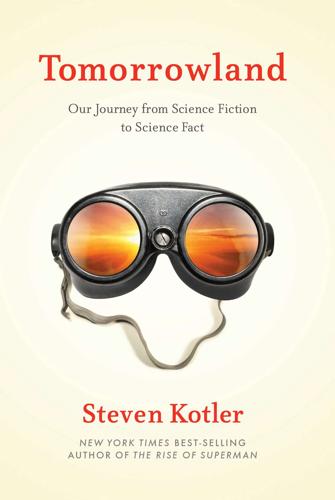
Tomorrowland: Our Journey From Science Fiction to Science Fact
by
Steven Kotler
Published 11 May 2015
So, that day in the diner — despite Peter’s exuberance, despite the fact that, back then, the XPRIZE had no major sponsors and no money in the bank, and despite the fact that NASA had called his idea utterly impossible and the entire aerospace industry had agreed — from where I was sitting, some maverick opening the space frontier didn’t seem too outlandish. Of course, today, with the XPRIZE won, with the private space industry worth more than a billion dollars, none of this may seem incredibly shocking. But it was. In 1997, space was off-limits to anyone but big government. This much was gospel. Yet I left that diner absolutely certain that sometime in the next decade, the far frontier would open for business. I also left the diner a little gobsmacked.

Road to Nowhere: What Silicon Valley Gets Wrong About the Future of Transportation
by
Paris Marx
Published 4 Jul 2022
Science fiction author and journalist Tim Maughan has argued that people like Thiel who worry about the slowing of technological innovation miss how technology has been deployed over the past several decades. The space program and other visible projects had slowed down before the recent expansion of the private space industry, but innovation has still been taking place—it has just been outside the realm of what most people see in their day-to-day lives. Thanks to networked technologies, the world has become much more complex as computers have taken over functions that previously had at least some human role. “From social media to the global economy to supply chains,” Maughan explained, “our lives rest precariously on systems that have become so complex, and we have yielded so much of it to technologies and autonomous actors that no one totally comprehends it all.”18 These systems are designed to speed up transactions and interactions in service of efficiency, but, in the process, we have given up a lot of democratic power over them, even as we have failed to equip those systems with “an ability to make ethical decisions and moral judgments.”19 The stock market, where automation has increased both the speed and quantity of trades, is an example of this, but the best one is the system of logistics and global supply chains that has been built out over the past fifty years.

Amazon Unbound: Jeff Bezos and the Invention of a Global Empire
by
Brad Stone
Published 10 May 2021
The $1.49 billion deal was negotiated by Holly Sullivan, Amazon’s director of economic development, who extracted $40 million in tax incentives from local and state governments. But if Clark thought he would get another commendation from Bezos, he was wrong. Amazon’s new air hub was going to create around two thousand new jobs. In contrast, electric automobile maker Tesla—run by Elon Musk, Bezos’s chief rival in the private space industry as well as for public adulation—had secured $1.3 billion in tax breaks a few years before for a battery plant in Nevada, dubbed the Gigafactory. Tesla was projecting it would create 6,500 jobs. It had earned about thirteen times more in tax incentives, per job, than Amazon. Bezos, of course, had spotted the difference.
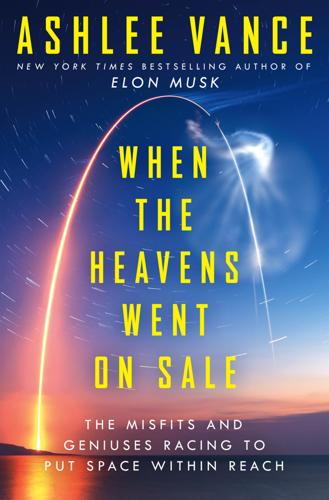
When the Heavens Went on Sale: The Misfits and Geniuses Racing to Put Space Within Reach
by
Ashlee Vance
Published 8 May 2023
The underlying infrastructure transforms from everyone fighting over access to a couple of railway systems to something much closer to mass transit. Back in 2008, hardly any investment money flowed into private space endeavors. Musk and Bezos, with his start-up Blue Origin, were the main private rocket players, and very few satellite start-ups existed. Over the past decade, however, tens of billions of dollars have poured into the private space industry. The obvious transition has been from that of governments to billionaires and then to venture capitalists. Trying out an idea in space no longer requires congressional approval or some wild-eyed dreamer willing to risk his personal fortunes; it just requires a couple of people in a room agreeing that they’re willing to spend someone else’s money on a huge risk.